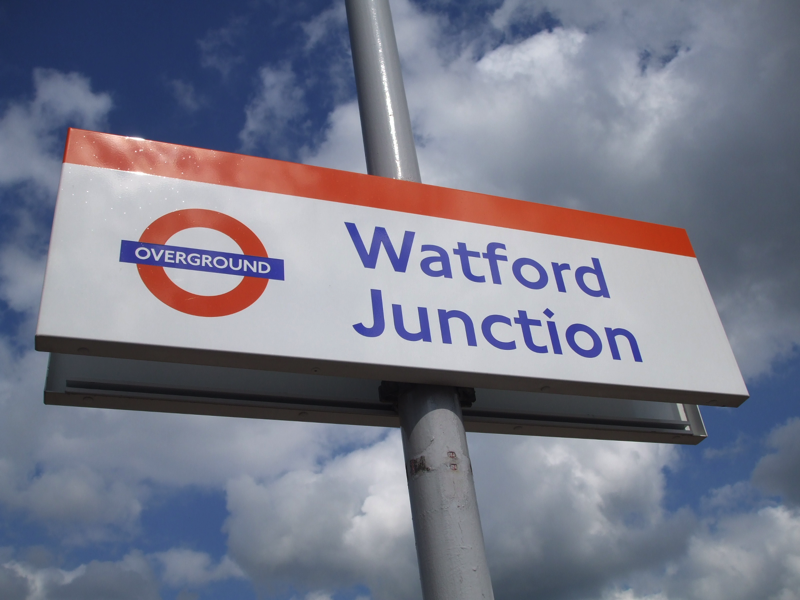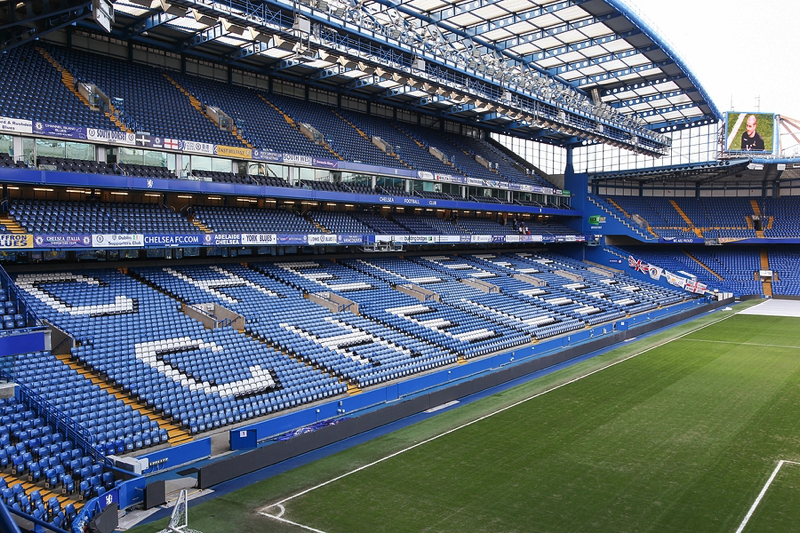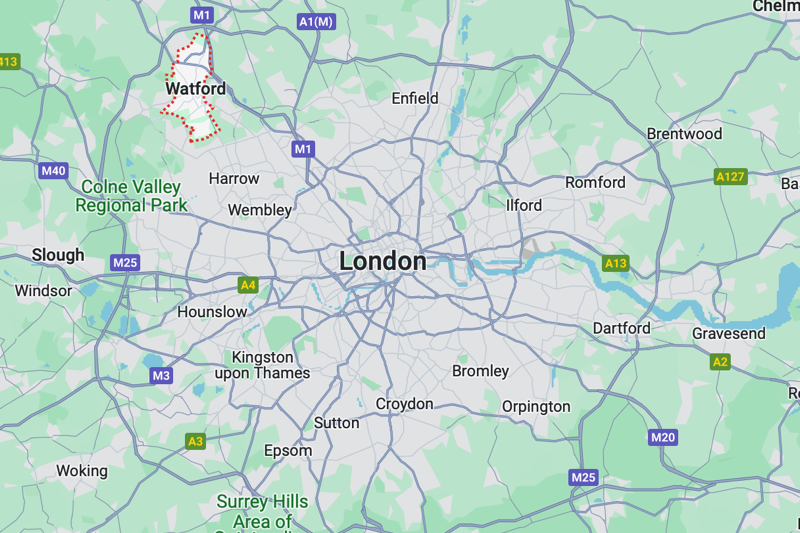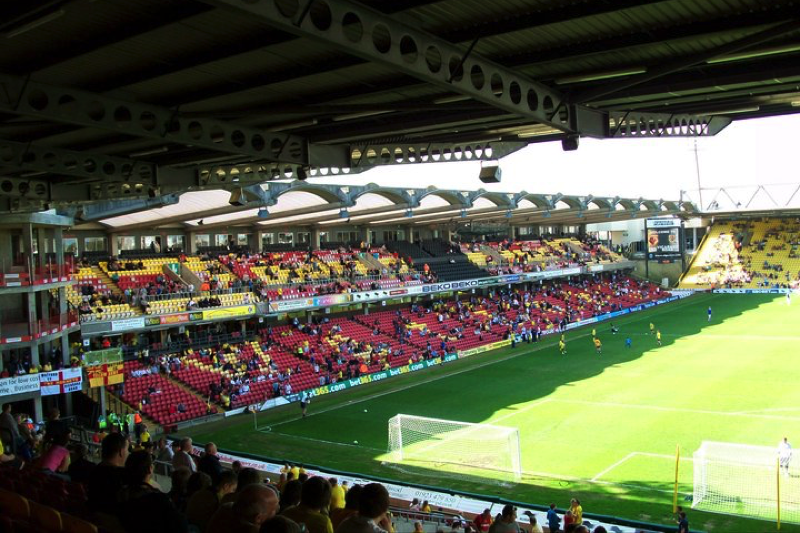Matters relating to geography are not always clear-cut. Ask someone where the south of England ends and the north begins, and you will get a wide range of answers. Although the location of Watford is not as frequently discussed as the whole north/south debate, ‘Is Watford in London?’ still remains a relatively common question.
It is not a question everyone agrees on, however. A YouGov poll in 2020 asked Londoners if they think Watford is part of the capital. From the 1,135 respondents, 27% felt Watford was part of London while 60% did not (out of the remaining 13%, 12% selected ‘don’t know’ and 1% didn’t know Watford was a place!).
Given the degree of confusion, even among locals, as to Watford’s location, we thought it would be helpful to clarify the matter. This may be particularly useful for any football fans who want to know if they should consider Watford one of the London teams.
Watford Is Part of Hertfordshire, Not London
To get right into it, we can tell you that Watford does not form part of Greater London. Instead, it is the largest town within the county of Hertfordshire, which neighbours London’s north border. This should not really be a point of contention or something that is a matter of actual debate. Of course, you will find people (including 27% of Londoners it would seem) that argue Watford is a part of London but this is simply incorrect. Both geographically and administratively, Watford is in Hertfordshire.
Occasionally, people may confuse Watford with the Watford Gap. The latter is a low-lying area of land situated beside the Northamptonshire village of Watford (so even further away from London). Incidentally, some people consider this to be the dividing line for the north/south debate, but we digress.
Why Do People Class Watford as in London?

Part of the reason why a significant number of people consider Watford to be in London is perhaps that it falls inside London’s orbital motorway, the M25. Alternatively, it could be that Watford forms part of the London Underground and Overground system. To be fair to those that do believe Watford is in London, very occasionally the town does fall within some London-based definitions. In 2004, Eurostat (stats provider for the EU) created this idea of a ‘Larger Urban Zone’ and within London’s zone included Watford. Mind you, the likes of Chelmsford were also included and you will struggle to find anyone arguing that the new city in Essex is part of the capital.
Other reasons for arguing Watford’s true location is London are quickly dismissed. Some might point to the Watford-based ‘Warner Bros Studio Tour London’ – it has London in the name. For this, you can simply point to the fact that neither London Stanstead nor London Luton airports are anywhere near being within London. London simply forms part of the name to make it more appealing to unsuspecting tourists!
By this point, you might say, ‘Okay, the town of Watford is in Hertfordshire, but that does not necessarily mean the football club is’. After all, Grimsby Town FC have played their home matches at Blundell Park in neighbouring Cleethorpes since 1899. Watford FC have only ever been based in Watford though. They began playing their football in Cassiobury Park before moving to Vicarage Road, also located centrally in Watford, in 1922. Their current training ground is outside of Watford, but not only is it still not in London, but merely having training facilities in the capital would not be enough to make them a ‘London club’.
Can You Call Watford FC a London Club?
With the town of Watford being based in Hertfordshire and not London, and the club having no real connection to the capital whatsoever, you should never consider Watford FC to be a London club. Despite this, you will occasionally find various sources saying otherwise. This article from the London-based Evening Standard called Watford’s clash with Spurs a London derby. Similarly, bookmakers Coral told social media followers there was a London derby when QPR were travelling to Watford.
It is not difficult to find more examples of this but needless to say, these are not actual London derbies. A London derby must feature two teams from London, not just one London team and another that is situated relatively close by. Calling these matches London derbies is akin to calling a clash between Rotherham United and Sheffield Wednesday a Sheffield derby. We don’t recommend you do that in Rotherham – or Sheffield for that matter!
It is telling that Watford’s main rivals are not a club from within the capital, but rather Luton Town, based northwards in Bedfordshire? This is Watford’s only notable rival and the only one that the majority of the fan base cares about. Typically, truly London-based clubs have main rivals located within the city, one notable exception though is the slightly curious feud between Crystal Palace and Brighton.
Which Teams Are London Clubs?

During the 2023-24 season, there were 13 London clubs within the Football League (top four divisions of English football) plus five sides forming part of the National League (fifth tier). In alphabetical order, these clubs are as follows: AFC Wimbledon, Arsenal, Barnet, Brentford, Bromley, Charlton Athletic, Chelsea, Crystal Palace, Dagenham & Redbridge, Fulham, Leyton Orient, Millwall, Queens Park Rangers, Sutton United, Tottenham Hotspur, Wealdstone and, last but not least, West Ham United. The Hammers even play in the London Stadium!
So, whenever two teams from this list are playing one another, you have yourself a London derby. If one of the above sides is playing Watford, however, this is not a London derby and should never be called one.
Watford Is Not in London
To keep this summary short and sweet, Watford is not in London, it is in the county of Hertfordshire. Similarly, Watford FC are not a London club and therefore they cannot take part in a London derby. This situation will remain until Watford decide to relocate south or there are some major changes to county boundaries.





